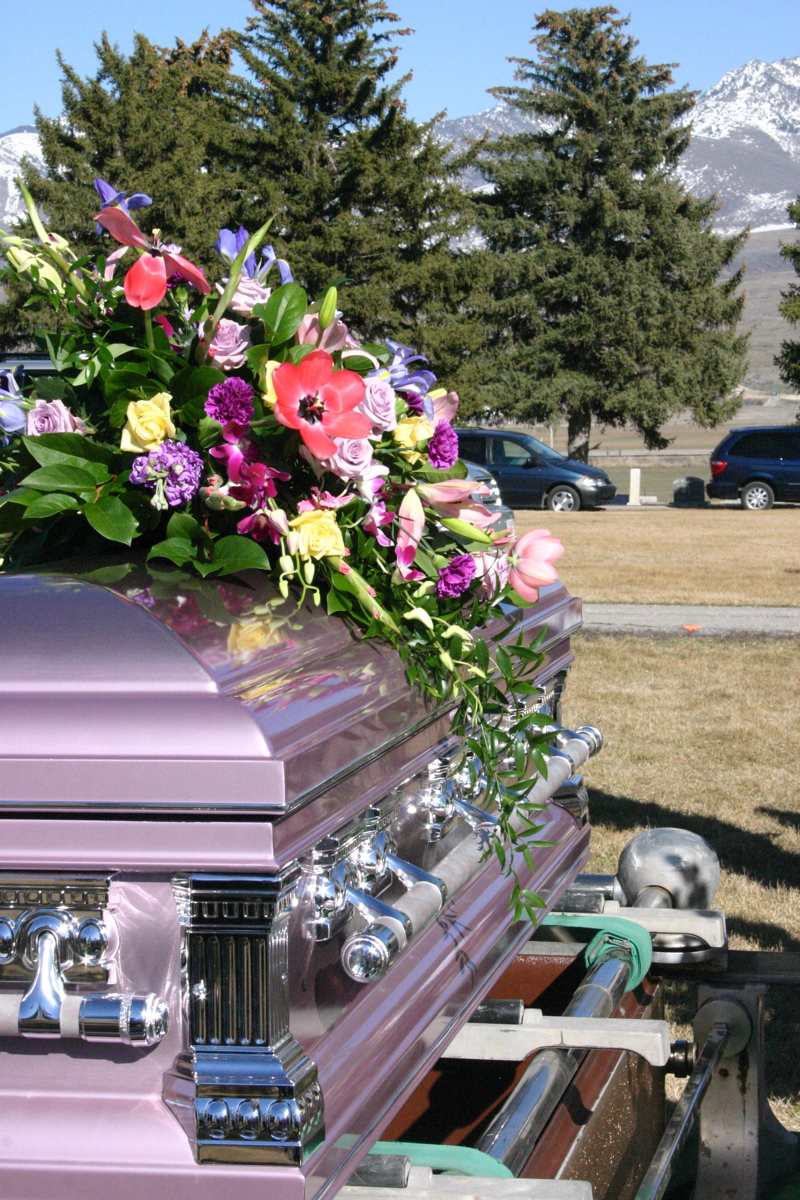Q. What happens at LDS funerals?
 I imagine that the flavor of the funeral might change in different cultures so I will zero in on American and more specifically-Utah Mormon funerals. Following is an overview of the typical funeral (keeping in mind, of course, that each one is different because every family is different). When a person dies the Bishop will be called, he will help the family make arrangements and offer the services of the ward (the local congregation). The family will contact the local funeral home and make arrangements for a viewing, the funeral, and the interment. The Bishop (leader of the ward) and Relief Society President (leader of the women of the ward) will stay in contact with the family throughout the week finalizing plans and offering help or suggestions.
I imagine that the flavor of the funeral might change in different cultures so I will zero in on American and more specifically-Utah Mormon funerals. Following is an overview of the typical funeral (keeping in mind, of course, that each one is different because every family is different). When a person dies the Bishop will be called, he will help the family make arrangements and offer the services of the ward (the local congregation). The family will contact the local funeral home and make arrangements for a viewing, the funeral, and the interment. The Bishop (leader of the ward) and Relief Society President (leader of the women of the ward) will stay in contact with the family throughout the week finalizing plans and offering help or suggestions.
Three to six days after the death the funeral will be scheduled to fit into the schedule of the funeral home and the traveling restraints of the family. They often aim for a weekend. The church building is offered, free of charge, but other arrangements can be made depending on the connection the person might have in the area and the size of the family. The first thing scheduled is the viewing, which will usually be held at the funeral home for a couple of hours the evening before the funeral. The next morning the body will be transported by the funeral home directors to the church where another one to two hour viewing will be made available for friends and neighbors who wish to pay their respects and offer comfort to the family. The viewing is held in a larger room in the church building but not the chapel.
About 15 minutes before the funeral starts the family will gather in the room with the casket. A member of the family will offer a family prayer, and the directors will close the casket after the family has had their final chance to say their goodbyes. The funeral will be held in the chapel. When the family is ready to enter the chapel, the person conducting the funeral (generally the Bishop) asks everyone to rise while the closed casket is wheeled in and positioned in the front of the chapel with the family following and taking their seats in the front and center pews. The chapel is decorated with the flowers people have sent to the family.
The program of the funeral will have been worked out by the family with the aid of the Bishop. There are a few suggestions: 1. The funeral is opened and closed with prayer. 2. The goal is to have the service completed in about an hour. 3. The music should follow the guidelines outlined for other church meetings, no drums or horns, respectful and with a spiritual theme. The talks celebrate the life of the deceased- they might be given by the children or other family members or close friends. One talk is designated as the spiritual message and is often given by a church leader or other active member who knows the deceased but is also comfortable with the doctrine of the church. This talk will include a message of hope about the plan of salvation and the promise of the resurrection. It is somewhat doctrinal in nature.
Following the service the audience will be asked to stand again while the pall bearers move the casket out of the chapel to the hearse, followed by the family. Family and close friends go to the cemetery for the burial. When everyone is gathered and the casket is placed on the straps above the grave, a priesthood holder offers a prayer that dedicates the grave as a safe resting place for the deceased until the resurrection. Some families choose to release balloons or have another musical number before they disperse. If the deceased has served in the military a 21 gun salute can be given at this point.
While all this has been going on the Relief Society of the ward has been busy setting up a luncheon for the family. Some aspects of it have become pretty uniform: Ham or chicken, green salad, rolls, “funeral” potatoes, and cake for dessert.
The separation caused by death is difficult for those left behind and the funeral is a rite designed to give comfort and assurance to the family and friends. The LDS funeral is a fairly simple affair due to the belief that the spirit of the person no longer inhabits the body. It is a time of reflection on the life and relationships of the departed as well as a time to consider the grand plan of happiness that God has offered to all of his children. It encourages the individuals of the congregation to reflect on their own progress as well as their relationship with the departed and their relationship with their Lord.